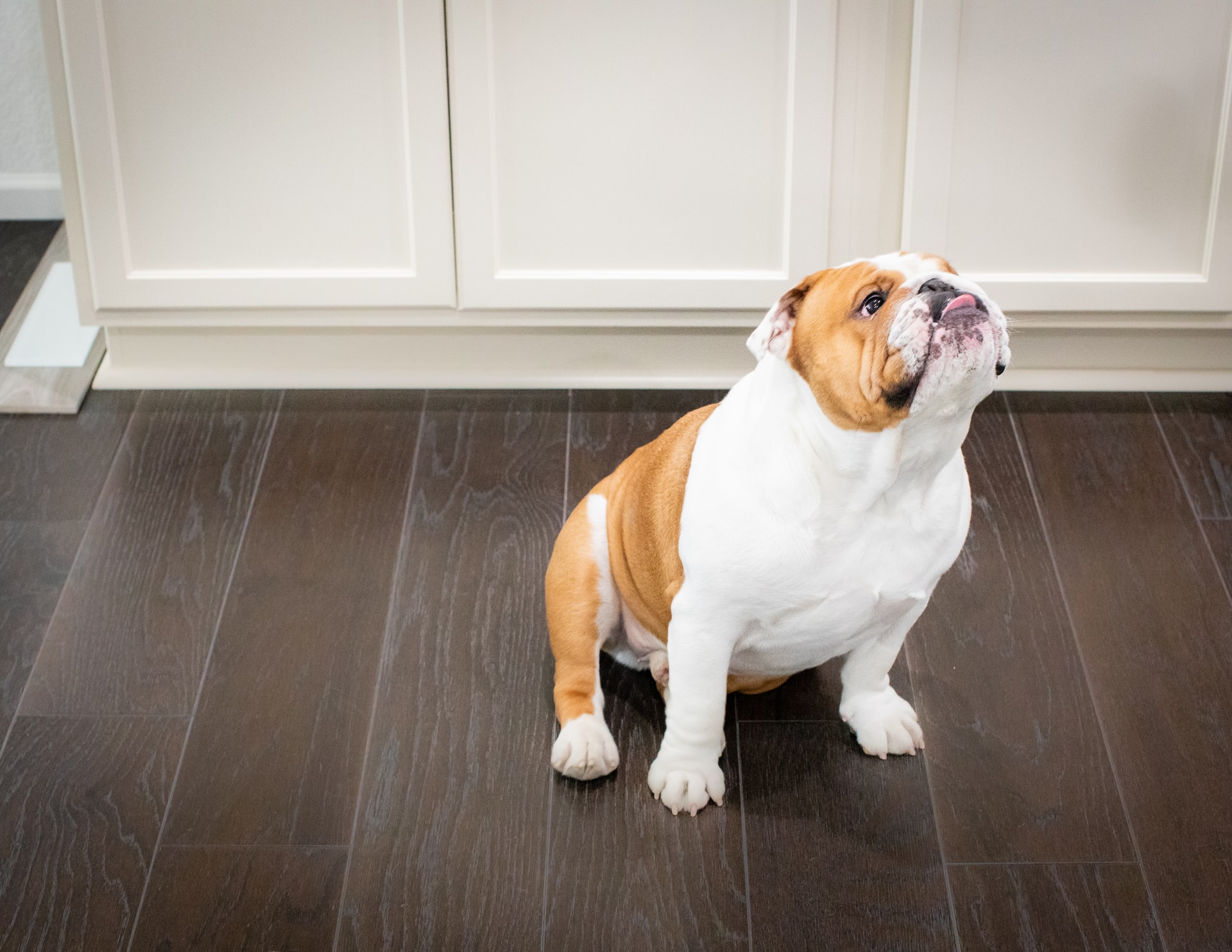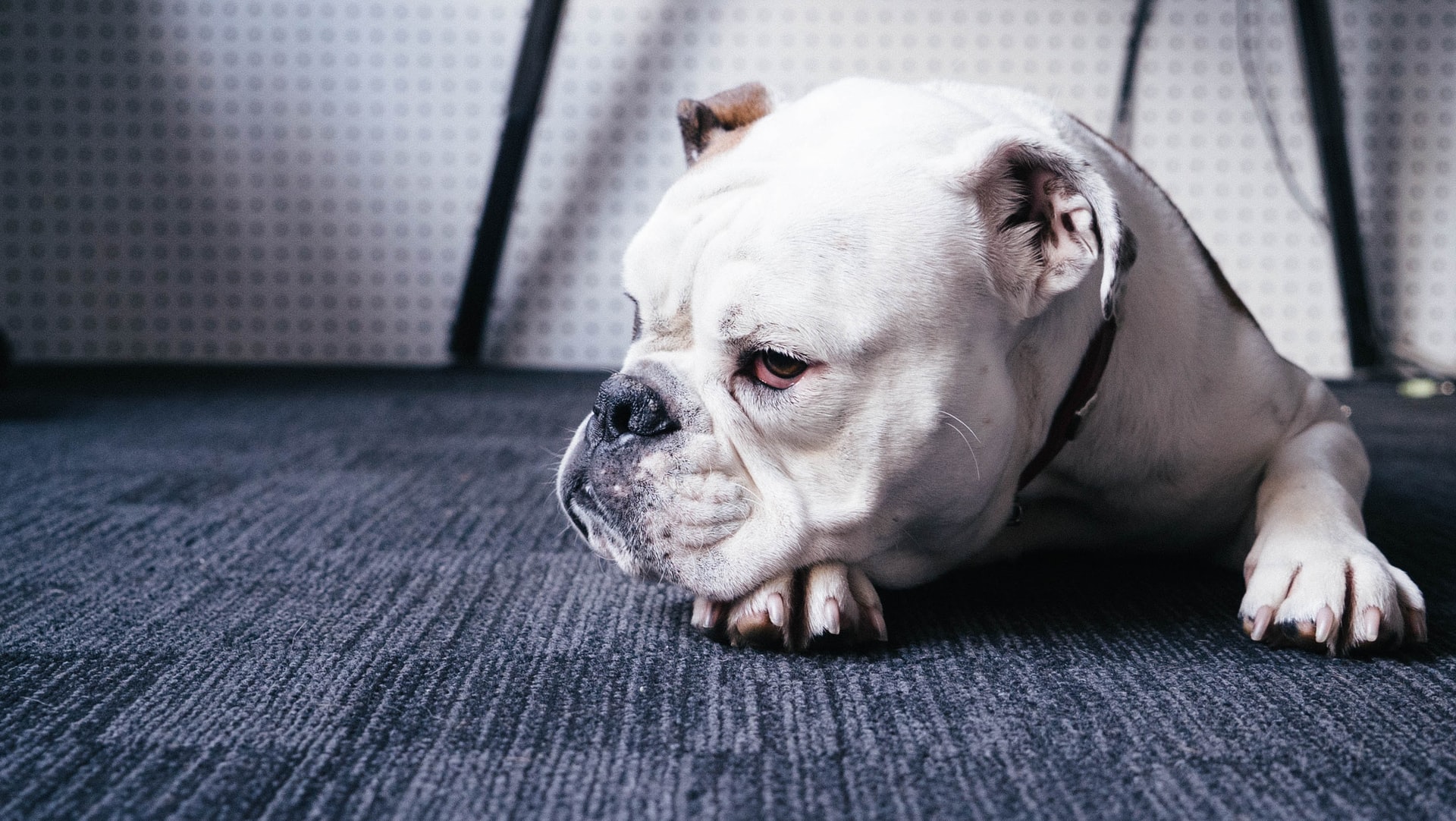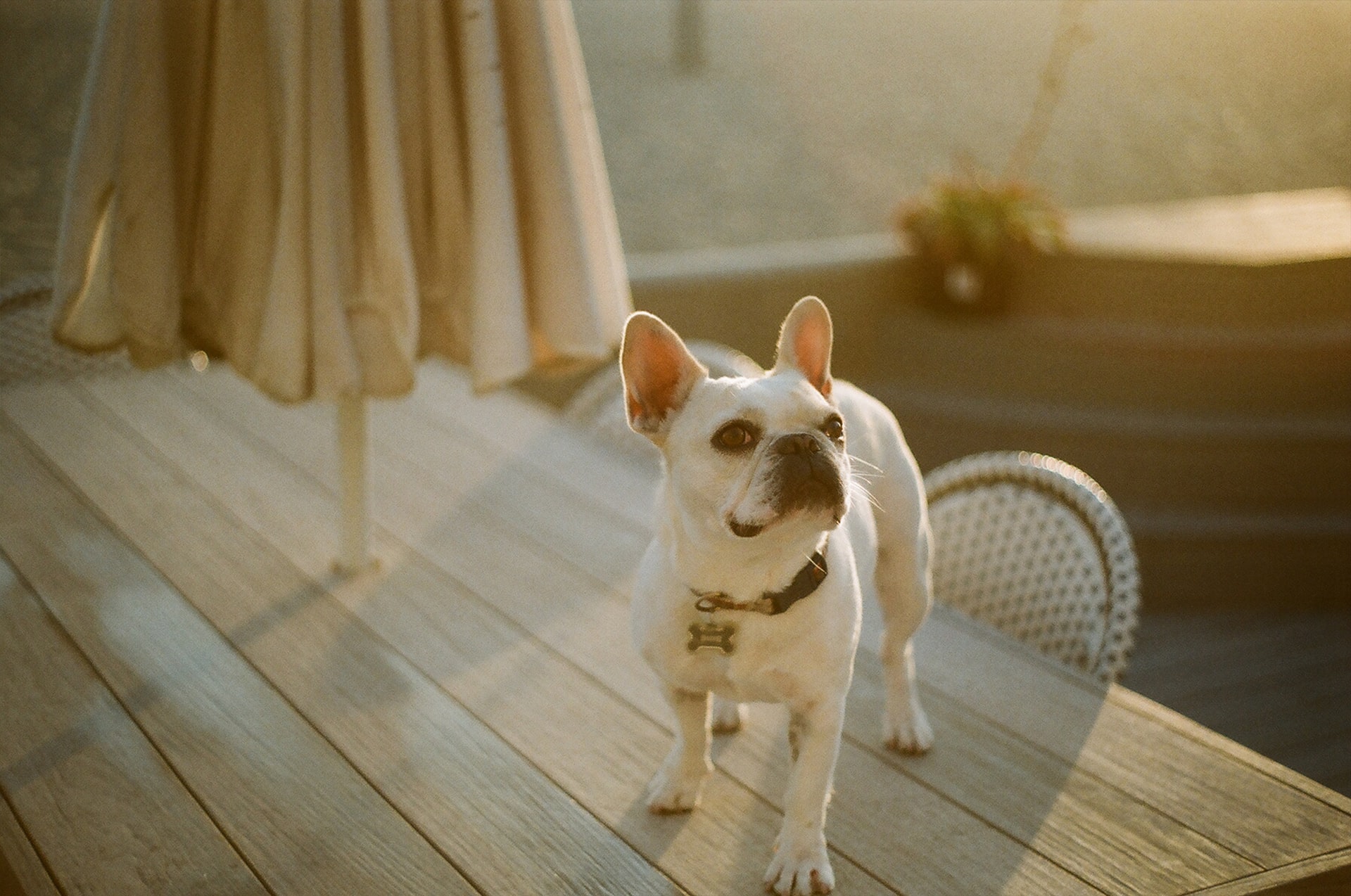Wooden flooring is aesthetic, but it can be challenging to maintain if you have dogs indoors. Their claws can scratch through the wood, leaving ugly marks that can be difficult to fix later on. This is why you should know how to prevent scratches on hardwood floors from dogs.
In general, homeowners spend thousands of dollars on flooring. It could be more expensive if you’re opting for rare wood types. Upkeep is also a big thing for wooden floors to prevent water damage, warping, scratches, and discoloration.
Pet owners, particularly, face the challenge of balancing the fact of having a dog and installing a hardwood floor at the same time. The good news is that there are workarounds that you can try to avoid this problem.
How to prevent scratches on hardwood floors from dogs
If you’re having a hard time keeping your dog off your hardwood floor, here are some steps you can take to protect your precious investment:
1. Clip your dog’s claws regularly

The first thing you should do to protect your hardwood flooring is to clip your pet’s claws. This way, it won’t become overgrown to the point that it’s already scraping the floor.
Aside from protecting your floor, clipping your dog’s nails is also crucial to prevent injuries on its. This is because the overgrown nail will curl and dig into the dog’s flesh.
To clip your dog’s nails, it’s recommended to use a dedicated clipper. Also, you should watch out for the quick or a blood vessel right where the nail meets the canine’s paw. You should never cut the quick as it will bleed profusely and it will also be painful for your pet.
In general, it’s ideal to clip your pet’s claws once a month to prevent it from scratching the floor. You could do this more frequently if your dog’s nails grow faster.
2. Use claw covers on your dog’s nails
If your dog’s nails still scrape your hardwood floor, it will help a lot to use nail covers to prevent this. It’s the same used on cats to avoid their nails from scratching surfaces.
These nail covers are paired with non-toxic glue, which is mostly water-based for easy removal. It’s also a good option for dogs who aren’t comfortable wearing boots.
Despite that, you should still clip your dog’s nails regularly. Also, nail covers will create a tapping sound on the floor, which some may find annoying.
3. Consider using dog boots

If nail covers are inconvenient for you and your dog, booties are the best way to go. This will wrap around your dog’s paws so its nails won’t scratch hardwood floors.
Also, dog booties give your dog better footing if your floor is slippery. This is a common problem with laminated or waxed wooden flooring at home.
Aside from that, dog booties can also be used as paw protection during outdoor walks. You can find it in various designs, sizes, and materials.
However, you should know that your dog will take time to get used to wearing booties. On the first days, your doggo will try to rip it off its paws by biting or pulling. This is normal and most canines will grow accustomed to it with consistent food rewards and desensitized.
Lastly, you should never force your dog to wear the booties all day long. It’s still necessary to remove it, so your doggo won’t have matting on its legs.
4. Walk your dog more
Walking your dog regularly will help naturally trim its nails. As your pet’s nails touch and scrape the pavement, it will be filed little by little. However, for dogs that have fast-growing nails, you may still need to clip some length manually. This way, it won’t scratch your hardwood flooring.
Moreover, this is also a great solution for dogs that dig through wooden floors. By draining the excess energy of the pooch, it wouldn’t have the motivation to target your squeaky, wooden floorboards.
Still, you should be mindful of the outdoor temperature when walking your dog. If it’s a very hot day, you may need to put on booties on your pet’s paws to save it from potential burns and injuries.
Also, the duration and frequency of walks should match the exercise needs of your dog. For example, breeds like English Bulldog and French Bulldog require less physical exertion than other breeds.
5. Cover the hardwood floor with carpeting

If you’re doing all the steps above and your dog still scratches the hardwood floor, you can utilize carpets. It doesn’t have to be permanent carpeting, so you can still see the beauty of your wooden flooring.
Usually, dogs have favorite spots around the house. You can place small stretches of carpeting on these areas to reduce the scratching.
If carpeting ruins the look of your home, you can opt for stylish rugs instead. You can move this around or use multiple pieces around the house.
The good thing here is that the rugs or carpet will also catch dander and fur. This will make it easier for you to collect such dirt as long as you wash the rugs regularly.
6. Limit your dog’s access around the house
If possible, you should limit your dog’s access around the house, especially in areas with wooden flooring. You can place baby gates to prevent your pet from accessing specific areas around the house.
Other pet owners use training collars that allow them to set a virtual fence. You can also utilize scat mats, which will deliver a mild static correction on your dog once it steps on the material. Such mats can be placed on entrances and door areas.
To be honest, limiting a dog’s access around the house can be challenging, especially if the entire flooring is wood. In this case, you can consider the other solutions discussed in this post.
7. Give your dog its own space
If blocking your dog’s access doesn’t work, you can try to keep it away from hardwood flooring by giving the canine its own space.
You can set up the dog’s bed on a corner, to at least encourage it to stay more in a single place. Make sure that you add toys, a water bowl, and other things your dog likes in this area.
8. Use a scratch-resistant hardwood treatment

For those with multiple dogs at home, scratch-resistant flooring is the better option. This will save you from the frustration of dealing with damages on your expensive hardwood floor.
The most common option flooring services use is aluminum oxide. This is a mineral used as a coating for hardwood flooring. It serves as a shield against moisture, scratches, and wear and tear. The best thing is it doesn’t change or affect the color of your floor.
Overall, this is the long-term and instant solution to protect your wooden floor. However, it comes at a cost, which gets more expensive the bigger your floor area is. Nevertheless, the best person to consult here is a local flooring provider.
How to fix paw scratches on your hardwood floor
If the damage is already done by your dog, you can try several methods to fix the scratches on your hardwood floor. Here are the steps that pet owners recommend:
Step 1. Clean the scratched area
The first thing you need to do is clean the scratched area. You can use a small amount of floor cleaner to remove any dirt, dust, gunk, or dander on the scratches.
Be gentle on wiping the area to avoid making the scratch worse. After that, dry the area and make sure there is no cleaner left.
Step 2. Apply putty to fill the scratch
For very deep scratches, you can fill it with putty or wood filler. You can use a knife for easier and even application.
Most hardwood floor scratches won’t need much unless your dog did serious damage.
Once you’re satisfied with the filler you applied, let it cure for some time. Check the instructions on the wood filler label to see how long it needs to cure. It can be anywhere from 30 minutes to an hour.
It’s important to let the wood filler cure fully before proceeding to the next step. Otherwise, you’ll be ruining your hardwood floor even more and even potentially creating new scratches.
Step 3. Sand the filled area once dry
Once the filler has cured, the next step is to sand it. Take note that you only need to sand the filled area gently and not the surrounding flooring, which isn’t damaged. If you do this, you’re going to ruin your flooring even more. Overall, just spot-sanding on the itty-bitty areas with scratches.
The goal here is to even out any excess filler, so it doesn’t create a rough patch on your floor.
Step 4. Use a color-matching stain
After you’ve smoothed out the filled scratches, the next step is to apply a stain that matches the color of your hardwood floor. You can easily purchase this at a local supply store.
Again, you should only apply the stain on the scratched area. Also, don’t apply too much as it will take time to dry and it will create a thick, gooey layer on your floor that won’t cure.
Depending on how dark your floor is, you may need to re-apply the stain several times.
Step 5. Let it dry
Lastly, let the stain dry and cure. If you need to re-apply another layer, make sure that you follow the instructions on the label.
Also, you should keep your dog off-access to the area to avoid exposure to the stain and to prevent the canine from messing with your DIY remedy.
Frequently Asked Questions
Q: Do dogs scratch up hardwood floors?
A: Your dog can scratch the hardwood floor can scratch your floor intentionally, especially if it has a penchant for digging. Also, many dogs will inadvertently scratch wooden floors if their claws aren’t regularly trimmed. It’s important to address this both to protect your wooden flooring and your dog as well.
Q: Can dogs walk on refinished hardwood floors?
A: If your hardwood floor has recently been refinished, you should wait for at least 24 to 48 hours before letting your dog step on it. This is to allow the finishing coat to dry and be absorbed into the wood fully. If you’re worried that your dog will scratch your refinished floor, you should consider the tips we mentioned above.
Q: What wood floor material is most scratch-resistant?
A: Wood types like white oak, hickory, and hard maple are just some of the most scratch-resistant options you can use for your floor. On the other hand, you should try to avoid black walnut, pine, and cherry as these are softer and susceptible to scratches from your dog’s claws.
Q: What is the most durable flooring for dogs?
A: If you have a dog, the best flooring material is tile. It’s durable and very much resistant to scratches. Aside from that, tile flooring doesn’t absorb moisture from dog poop or urine. If you’re not a fan of tile, you can also consider vinyl or laminate flooring. For those who are keen to have wooden floors that are scratch-resistant, engineered versions are excellent options.
Q: Does dog urine damage hardwood floors?
A: If you leave dog urine soaking on hardwood floors, it may seep through the pores or fibers. In the long run, this will lead to discoloration on the affected spot. You’ll also notice odors, which is also the main reason why your dog may repeatedly urinate in the same area.
Final words
Knowing how to prevent scratches on hardwood floors from dogs will save you from frustration. Since dogs can’t retract their claws like cats, they could scratch surfaces even if they don’t mean to.
The key here is to keep your dog’s nails well-trimmed and to utilize preventive methods to protect your floor. Whatever happens, you should never punish your dog for the damage.
Do you have anything to add here? Share your thoughts below!

